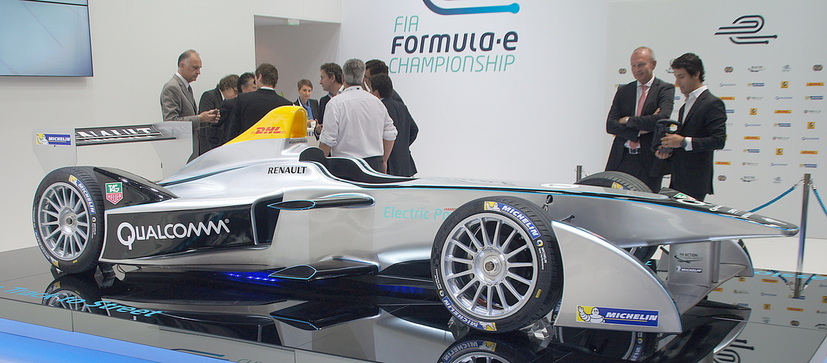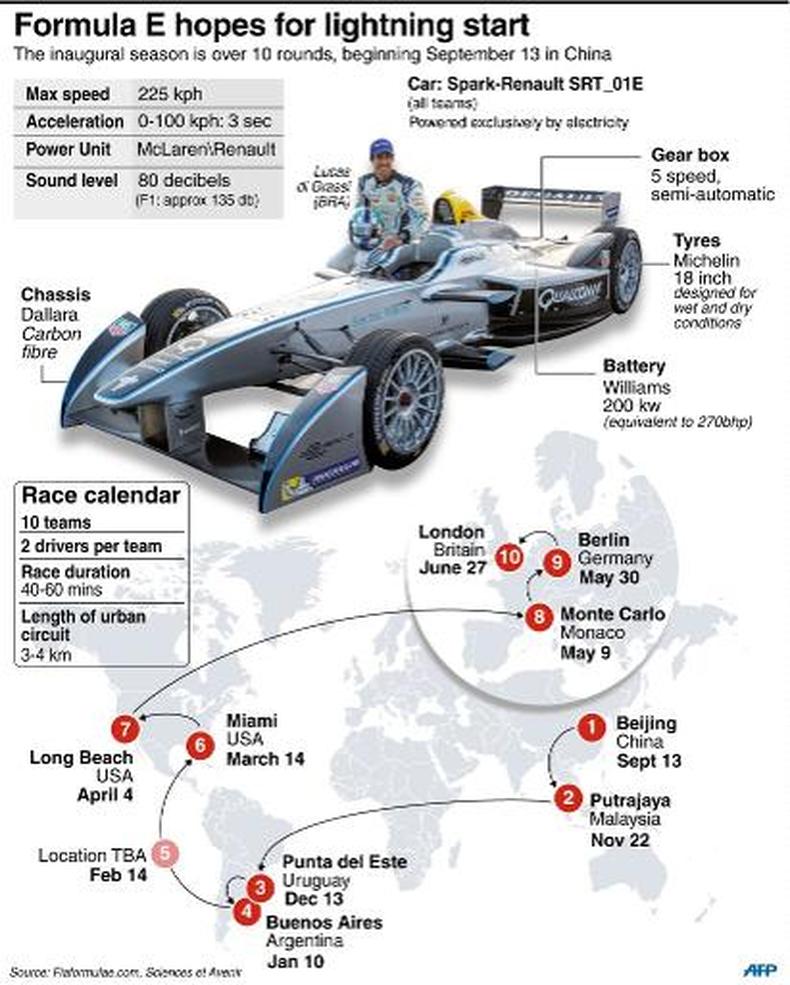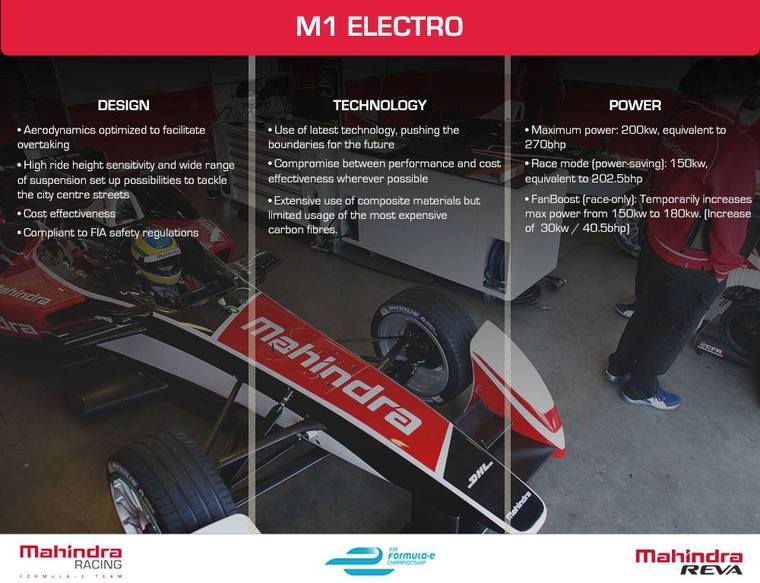by Johnson
On 13 September 2014 the world witnessed the first Formula Race for Electric cars which was held in Beijing, China. This event can be considered as one of the major defining moments in history that would shape the future of modern automobiles.
In all possibility this even has marked on the wall, that your generation will be the last of the Mohican's who will drive fuel guzzling cars...
But on the 13th of this month, there were 10 Teams, each team had 2 drivers and 4 cars. The future plan is to have the races held in ten Cities and the track approximately 3 km long with races originally intended to run exclusively on street circuits in - Beijing, Putrajaya, Punta del Este, Buenos Aires, Long Beach, Miami, Monte Carlo, Berlin and London.
Later on it was decided that not all races will be on street circuits. The surface of normal streets are originally planned for normal speeds, race drivers usually find it bumpy and lacking grip and also will not be able to control the car as well as on F1 Circuit . Run-off areas in Street Circuits may be non-existent, which makes driving mistakes more expensive than in purpose-built circuits with wider run-off areas. But more public will be able to see the races.
But on the 13th of this month, there were 10 Teams, each team had 2 drivers and 4 cars. The future plan is to have the races held in ten Cities and the track approximately 3 km long with races originally intended to run exclusively on street circuits in - Beijing, Putrajaya, Punta del Este, Buenos Aires, Long Beach, Miami, Monte Carlo, Berlin and London.
Later on it was decided that not all races will be on street circuits. The surface of normal streets are originally planned for normal speeds, race drivers usually find it bumpy and lacking grip and also will not be able to control the car as well as on F1 Circuit . Run-off areas in Street Circuits may be non-existent, which makes driving mistakes more expensive than in purpose-built circuits with wider run-off areas. But more public will be able to see the races.
For the first season, all teams were supplied with 2 Electric racing cars built by Spark Racing Technology, called the Spark-Renault SRT 01E which comprised of:
- Chassis designed by Dallara,
- Electric motor developed by McLaren
- Battery system created by Williams F1 and
- Hewland five-speed gearbox.
- Michelin the official tyre supplier
In contrast the The Formula One regulations specify that cars must be constructed by the racing teams themselves, though the design and manufacturing can be outsourced. Next year onwards Formula E too would follow the similar rules.
- Chassis designed by Dallara,
- Electric motor developed by McLaren
- Battery system created by Williams F1 and
- Hewland five-speed gearbox.
- Michelin the official tyre supplier
In contrast the The Formula One regulations specify that cars must be constructed by the racing teams themselves, though the design and manufacturing can be outsourced. Next year onwards Formula E too would follow the similar rules.
In Formula E Cars can accelerate from 0–100 km/h in 3 seconds while F1 Race cars accelerate to a speed of 0 to 100 km/h in 1.7 seconds. Formula E cars can attain a maximum speed of 220 km/h, but do note that today most F1 cars only achieve a top speed of about 325 kmph due to the recent performance restrictions. Thus the difference of the highest speed is just 105kmph which the electric car can easily achieve over the next 5 years. This is mainly because the battery technology (increase in power densities), is expected to improve significantly within the very short span of 5 years.
Today it might sound unbelievable but in 5 years time the Formula E car could take on the Formula 1 car and even beat it. The motor in the Formulae E car is already very efficient at around 95% while the petrol Engine has an efficiency of 25%. It is obvious that the battery is the weakest link right now and it will improve in time.
Today it might sound unbelievable but in 5 years time the Formula E car could take on the Formula 1 car and even beat it. The motor in the Formulae E car is already very efficient at around 95% while the petrol Engine has an efficiency of 25%. It is obvious that the battery is the weakest link right now and it will improve in time.
The biggest difference the drivers experience is the Noiselessness. Noise decibel levels is approximately 80 dB (ordinary car: 70 dB; bus: 90 dB; old Formula One car on track (V10) 130 dB). This is one thing that the Petrol Car drivers have to get used to. This has been the case with drivers of electric cars like the Mahindra e2o too who keep complaining that they can hear the car wobbling around. This is exactly because of the noise reduction now they drivers can hear everything – the wind, the suspension movement, the movement of the floors, you hear tires, all sorts of stuff where as in other racing series or even normal driving you just hear the engine.
But unlike in F1 where the advantages in aerodynamics, down forces, wing placement, engine design, exhaust placement, and of course the race fuel formula etc do not trickle down to the passenger cars in the Formula E the advantages of battery technology will get synchronized on to the passenger cars too.
But unlike in F1 where the advantages in aerodynamics, down forces, wing placement, engine design, exhaust placement, and of course the race fuel formula etc do not trickle down to the passenger cars in the Formula E the advantages of battery technology will get synchronized on to the passenger cars too.
Footage of the Formula E cars on the Westminster Bridge in the heart of London, with the backdrop of the Houses of Parliament and Big Ben:
The biggest advantage of the Formula E over the F1 is the Fuel Consumption. In a Formula 1 for each car the fuel consumption rate is normally around 75 l/100 km travelled (1.3 km/l) and all of them go over 300 kms during race and more during practice and qualification. In total in every competition each car covers more than 600kms, at a minimum, for which it would be using fuel of around 600Ltrs. On average a team shells around 2,00,000 liters of fuel in a single season. Which is $440,000 a year in just fuel consumption. Thus a Formula E team is ahead of the Formula 1 team every year by $ 440,000. This is a great advantage!
Of my favorite race drivers, Narain Karthikeyan has also joined the Formula E Driver Club. This club will allow each member to experience the new fully-electric Spark-Renault SRT_01E Formula E car which recently made its public debut driving along the iconic Las Vegas Strip.
Of my favorite race drivers, Narain Karthikeyan has also joined the Formula E Driver Club. This club will allow each member to experience the new fully-electric Spark-Renault SRT_01E Formula E car which recently made its public debut driving along the iconic Las Vegas Strip.
The build-up to the race… the cars make their way to China for the very first round of the FIA Formula E Season:
Narain Karthikeyan has raced in Formula 1 for Jordan and HRT, as well as testing for Williams F1, and last year won five races in the Auto GP Series.
"Sustainability is the current buzzword in automotive technology, and its application in a gruelling motorsport environment like Formula E will definitely help at many different levels," said Karthikeyan. "On the racing front as well, the series is breaking new ground by taking the sport to the fans in an unprecedented way across the world."
He has had and continues to have much better popularity in India than any other F1 driver in the world.
Getting him and Karun Chandok on the Team would have been great!
"Sustainability is the current buzzword in automotive technology, and its application in a gruelling motorsport environment like Formula E will definitely help at many different levels," said Karthikeyan. "On the racing front as well, the series is breaking new ground by taking the sport to the fans in an unprecedented way across the world."
He has had and continues to have much better popularity in India than any other F1 driver in the world.
Getting him and Karun Chandok on the Team would have been great!
India in Formula E
Mahindra Racing is the eighth and only Indian team to race in Formula E. Mahindra is a $16.2 billion multinational group employing more than 180,000 people in over 100 countries.
Anand Mahindra, Chairman & MD of Mahindra Group said - "We strongly believe that Formula E can provide an excellent global showcase for our electric vehicle technology."
This is promising for India. As Mahindra firmly believes in electric vehicle technology, while no Indian auto maker have done anything in the EV industry. Its important that groups like Mahindra to support the industry and keep innovating.
This and the investment inMahindra Reva clearly show that Mahindra are in this for the long term. That should only be good news for the EV industry in India.
Anand Mahindra, Chairman & MD of Mahindra Group said - "We strongly believe that Formula E can provide an excellent global showcase for our electric vehicle technology."
This is promising for India. As Mahindra firmly believes in electric vehicle technology, while no Indian auto maker have done anything in the EV industry. Its important that groups like Mahindra to support the industry and keep innovating.
This and the investment inMahindra Reva clearly show that Mahindra are in this for the long term. That should only be good news for the EV industry in India.
Final Words
Move over Formula 1, the new kid on the block is here!
Move over Formula 1, the new kid on the block is here!




